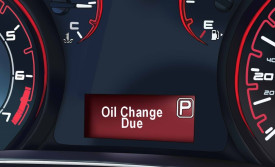Finding the right car insurance can be daunting for new drivers, given the wide array of options and high premiums often involved. New drivers are considered high risk by insurance companies, which translates into higher insurance rates. According to a study by The Zebra, an insurance comparison site, the average annual premium for a teen driver is nearly $5,000. However, understanding the basics and knowing a few tips can help mitigate these costs and ensure adequate coverage.
New drivers need to familiarize themselves with the common types of coverage: liability (both bodily injury and property damage), collision, comprehensive, uninsured/underinsured motorist, and personal injury protection. Liability insurance is mandatory in most states; it covers damages to other people and property if you're at fault in an accident. Collision and comprehensive insurance cover damages to your own vehicle from accidents and other sources (like theft or natural disasters), respectively. Opting for higher deductibles can lower premiums, but ensure the deductible is affordable in case of a claim.
Statistics show that adding a teen driver to a family policy can double the insurance costs, but there are ways to lower these expenses. Good student discounts, for example, can reduce premiums by as much as 15% if the driver maintains a "B" average or higher, according to data from Insurance Information Institute. Participating in defensive driving courses and choosing a vehicle with a high safety rating can also lead to substantial savings. Furthermore, shopping around and comparing quotes from multiple insurers cannot be overstated; rates can vary significantly for the same coverage.
Beyond premiums and discounts, new drivers should consider the insurer's reputation for customer service and claims satisfaction. J.D. Power's annual studies and reviews from current policyholders can provide valuable insights. Additionally, leveraging telematics programs offered by insurers can monitor driving habits and potentially lower rates for safe driving. Lastly, maintaining a clean driving record is crucial; according to an analysis by Forbes, a single speeding ticket can increase a driver's premium by an average of 25%.
In conclusion, while the cost of auto insurance for new drivers is inherently higher, strategic choices and understanding the nuances of insurance policies can help manage these costs effectively. By prioritizing safety, making informed decisions about coverage, and actively seeking discounts, new drivers can secure affordable and comprehensive auto insurance. Remember, the goal is not just to find the cheapest policy, but one that provides the right level of protection at a reasonable cost.

